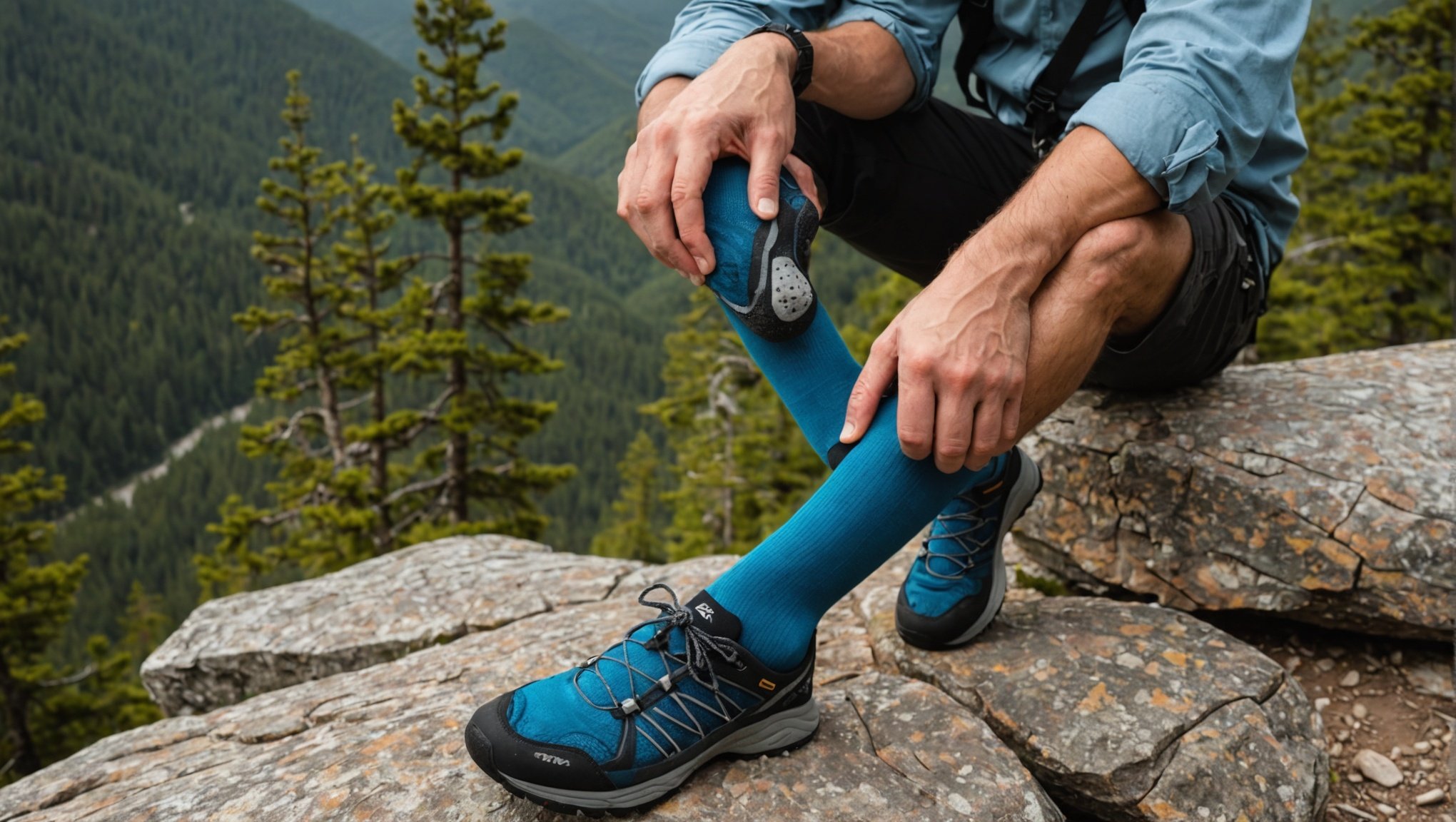Understanding Blisters and Their Causes
Blisters are fluid-filled pockets that form between the upper layers of skin, often resulting from friction, burns, or allergic reactions. In the context of hiking, hiking blisters are a common type of friction blister caused by prolonged abrasion, typically from footwear or socks.
Several factors contribute to the formation of blisters during extended hikes, with moisture being a significant one. Sweat can cause the skin to become soft and more susceptible to friction, increasing the likelihood of blister development. This is especially true in poorly ventilated shoes that retain moisture.
Have you seen this : Maximizing Performance: The Best Cross-Training Techniques for Competitive Figure Skaters
Accompanying moisture, ill-fitting footwear plays a crucial role. Tight or loose shoes lead to increased movement within the shoe, producing repetitive rubbing that eventually leads to blister formation. High-impact areas, like the heels and toes, are the most vulnerable.
The importance of preventing blisters cannot be overstated. Not only do they cause discomfort, but they can also significantly impact a hiker’s performance and enthusiasm. Ensuring comfort enhances hiking experiences and reduces the risk of lengthy recovery if blisters prevent continued activity. Prevention includes wearing the right shoes, keeping feet dry, and addressing any hotspots immediately to avoid blisters.
Also to discover : Essential Nutrients Every Swimmer Must Prioritize During Intensive Training Season
Characteristics of Effective Hiking Socks
Selecting the right hiking socks is crucial for a comfortable trekking experience. The materials utilized play a significant role, with wool and synthetic fibres often being the top choices. Wool, particularly merino, is celebrated for its excellent moisture-wicking abilities and natural temperature regulation. This helps keep your feet dry and reduces the risk of blisters. Synthetics, such as nylon and polyester, provide durability and additional moisture management, ensuring the socks maintain their shape and performance over time.
When evaluating hiking sock features, consider the cushioning. Adequate cushioning provides comfort and protection against rough terrain, offering support that can significantly enhance your hiking experience. Additionally, a proper sock fit is essential. A well-fitted sock prevents sliding, reducing friction and the likelihood of hot spots and blisters.
The height and thickness of the socks are also critical factors. Depending on your hiking footwear, choosing the correct height, such as crew or quarter, can offer better protection. Thicker socks generally provide more cushioning and warmth, which could be beneficial in colder regions. In essence, the right combination of materials, fit, and features ensures enhanced comfort and protection during hikes.
Top Sock Styles for Blister Prevention
Selecting the best sock styles is crucial for those looking to avoid dreaded blisters during hikes. Among the top contenders, crew socks shine for offering excellent coverage and protection. Known for extending above the ankle, these types offer additional support, reducing friction with boots. On the other hand, ankle socks are a preferred choice for those desiring more freedom around the calves but may not always be suitable for intense hiking activities.
For those truly dedicated to blister prevention, specialized hiking socks could be the solution. Brands like Darn Tough and Smartwool are frequently highlighted in user reviews for their exceptional fabric blends and blister protection features. Their designs often incorporate moisture-wicking materials and seamless construction, enhancing comfort and reducing blister risks significantly.
Many users testify to the effectiveness of these socks in keeping their feet blissfully blister-free, even on rugged terrains. Testimonials often emphasise the importance of fit and thickness, aligning with recommendations that suggest trying various styles to find the snug fit that best complements individual foot mechanics and hiking habits.
In conclusion, understanding the benefits of each sock type is essential for any avid hiker.
Choosing the Right Fit
Selecting the ideal sock fit is crucial for maintaining optimal foot health and preventing discomfort such as blisters. Ensuring proper sizing is pivotal in achieving the maximum comfort that socks can provide. When socks are too tight, they can constrict circulation, while overly loose socks can lead to folds that rub against the skin, potentially causing blisters.
To assess the right fit, it’s advisable to try on socks at the end of the day, when feet are typically at their largest due to natural swelling. Pay attention to how the socks feel around the toes, heel, and arch, ensuring they hug these areas snugly but not too tightly.
Additionally, the impact of layering socks can also play a significant role in enhanced comfort. While layering might be tempting for added warmth, it’s crucial to ensure that the combination doesn’t become too bulky or alter the sock’s fit. When considering double layering, opt for thinner socks to avoid disruption in fit and potential discomfort.
By recognising the importance of proper sock fit, individuals can take a proactive approach in safeguarding their foot health and ensuring comfort throughout the day.
Caring for Your Hiking Socks
Proper sock care ensures your hiking socks remain comfortable and durable. To extend their longevity, follow these recommended practices.
First, when washing hiking socks, use cold water on a gentle cycle. Avoid fabric softeners, as they can deteriorate the sock’s fibres, impacting their moisture-wicking abilities. Additionally, using a mesh bag can help prevent unnecessary friction with other garments.
Drying is equally important. Air drying is preferred over machine drying since high heat can weaken elasticity and cause shrinkage. Lay socks flat on a clean towel to air dry and preserve their shape.
Maintaining sock integrity over time demands more than just careful laundry practices. Rotate your sock pairs during extended hikes. This allows each pair to recover their natural fit and cushioning properties between wears.
Rotating your socks also reduces wear and tear, distributing use evenly among multiple pairs. It’s beneficial to pack additional socks on multi-day hikes, swapping them out regularly to keep your feet dry and comfortable.
Implementing these best practices in your routine will help retain the support and comfort necessary for your active lifestyle, allowing you to enjoy hiking adventures longer without unnecessary replacements.
User Experiences and Expert Advice
When embarking on a hiking adventure, seeking hiking advice from seasoned hikers can profoundly impact your journey. Many hikers swear by their sock choices, emphasising the significance of selecting the right pair to ensure comfort and durability.
Personal Anecdotes
Veteran hikers often share stories of their sock experiences, highlighting how the right choice can transform long treks into enjoyable experiences. For instance, using moisture-wicking socks has been proven to reduce discomfort during rainy hikes, keeping feet dry and blister-free. Wool socks, admired for their adaptability to diverse temperatures, are frequently recommended for both cold and warm hikes.
Expert Tips on Blister Prevention
Blisters can turn a scenic hike into an ordeal. Experts advise always choosing socks with seamless construction to reduce friction responsible for these pesky skin ailments. Layering thin socks under thicker ones offers additional blister prevention tips, ensuring reduced skin friction.
Importance of the Right Socks
Ultimately, selecting the appropriate socks hinges on the climate and terrain of your hike. Whether venturing into a moist rainforest or traversing arid trails, socks play a crucial role. Investing time in choosing the right pair can protect your feet, ensuring every step is a pleasure.






